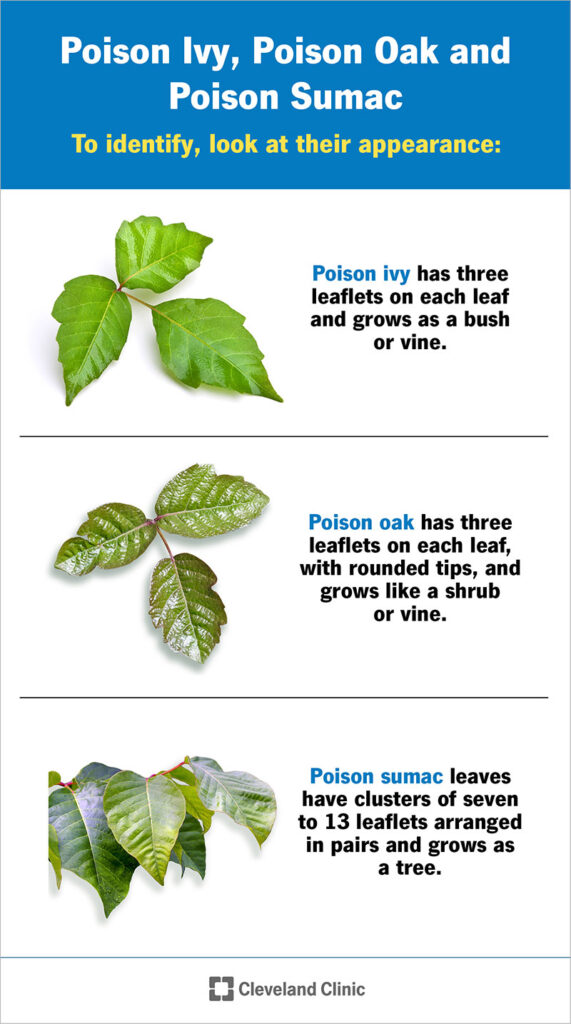
All about the five – sometimes confusing – plants.

Learning How to Identify Eastern Poison Ivy
This very common plant, Toxicodendron radicans, lives along nearly every roadside, parking lot, golf course, and orchard in the eastern part of the United States.
Here we present images of of this plant in all its common growth forms and in all seasons and some simple ALWAYS-NEVER signs to look for.

California Poison Oak
Pacific poison oak, or Toxicodendron diversilobum, is a serious problem plant. Although it grows almost only in California, a lot people encounter it there. It grows as a ground vine, as a shrub, and as a climbing vine.

Atlantic Poison Oak
The poison oak that grows in the east, Toxicodendron pubescens, can look a lot like poison ivy and they even grow intermixed, which adds to the confusion.
But there are some distinct difference from eastern poison ivy which we look at in photos below.

Western Poison Ivy
This form only grows as a shrub and in some parts of the west this is the ONLY kind of poison ivy found: not as a vine!
This plant might be found in the east, but is almost impossible to distinguish from Eastern poison ivy.

Poison Sumac
Poison sumac is ONLY found in very wet areas, often in shallow water. It is pretty rare in most places.
But people are very concerned about poison sumac and search for it online constantly.

Plant Identification Apps for Smart Phone
There are some very good plant identification apps for phones available: you snap a photo and the app usually identifies the plant very nicely.
And our choice, iNaturalist, also identifies all sorts of other things: bugs, insects, and much more. It’s free, it’s connected to National Geographic, so go check it out.
Comments are closed